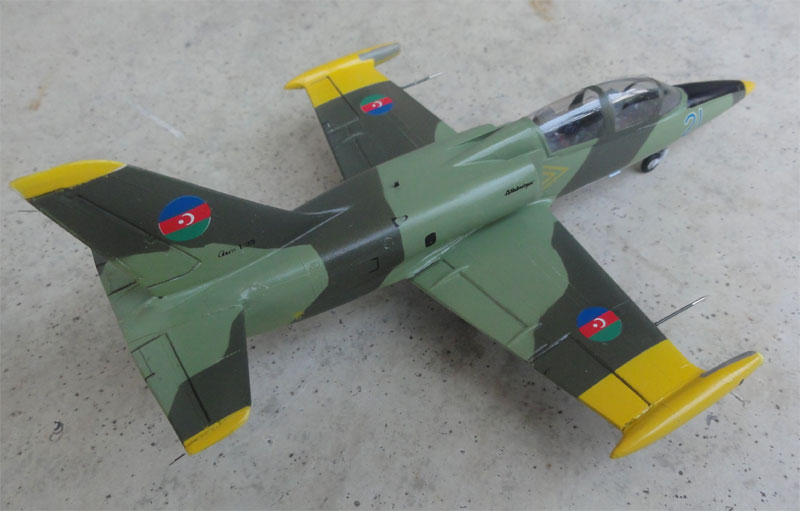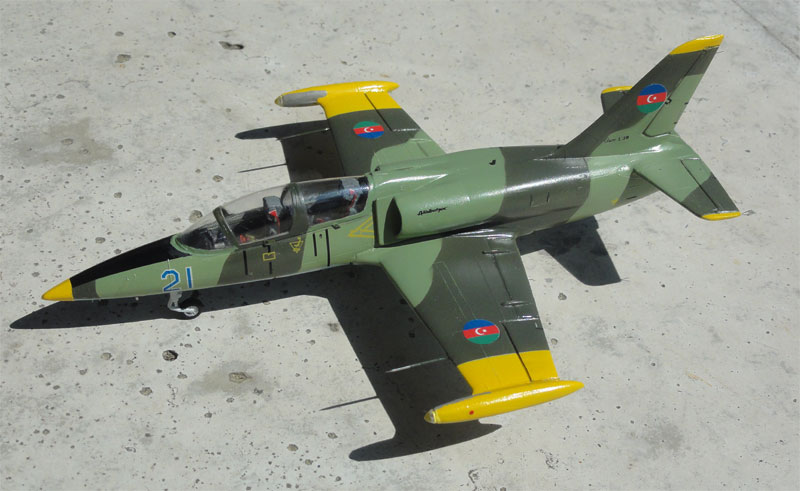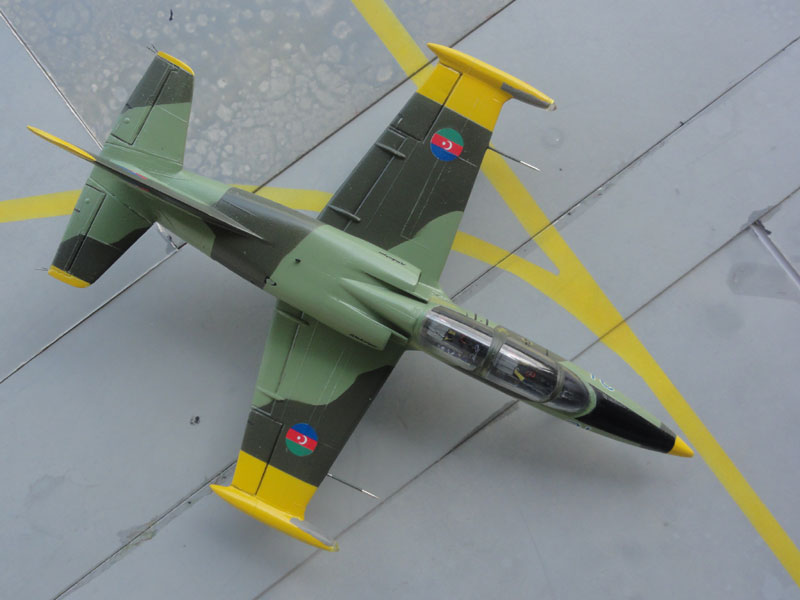[ Page 2 ]
... continued from
page 1....
page 2
page 3
page 4
The first model to be finished as
a L-39C of the Azerbaijani air force
was made rather straight forward as described on
page 1....
The canopy was to be set closed using
a PAVLA clear vacu canopy after the kit got PAVLA resin seats.
First various yellow panels were airbrushed using Revell Aqua 12 "gelb" on a mat white base after these were masked using the Harder Steenbeck and masking was needed. All other colours were airbrushed as well.
Camouflage colours used were these
acrylic paints:
Green: Gunze Sangyo
312 (about Fed.Std FS 34227);
Medium green: Gunze Sangyo
309 (FS 34079);
Blue: AKAN 73008 for
lower surfaces;
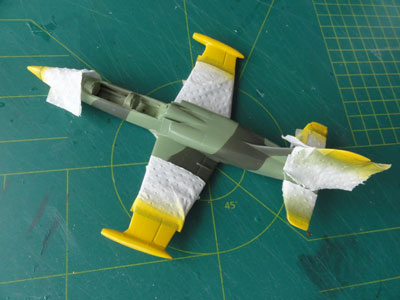
The anti-glare panel on the
nose is mat black.
The model was made "clean" without any tanks nor armament. It is mostly seen as used for jet training.
A few decals (also from the various
sheets such as from the Eduard kits) were applied after the model got a
gloss varnish coat using Future with the usual
technique.
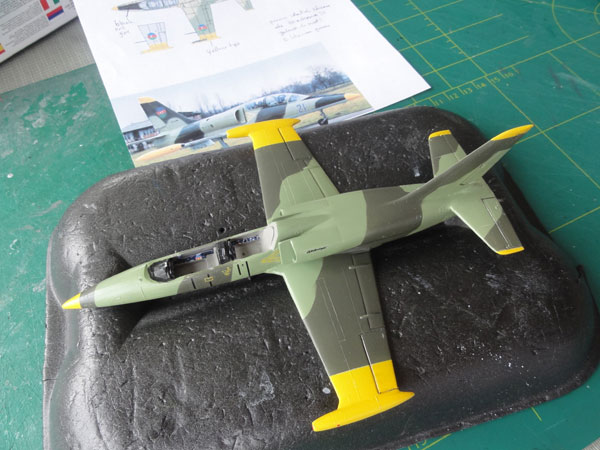
Azerbaijani roundel decals came from
Begemot
decal set 72-032 for a MiG-29. But the national roundel colour banner
should be reversed as well as the hammer, so some cutting was needed; it
can be done however using Begemot decals no #60 + 61. Photo below shows
that the green roundel areas face outboard. The nose code came from the
spares box.
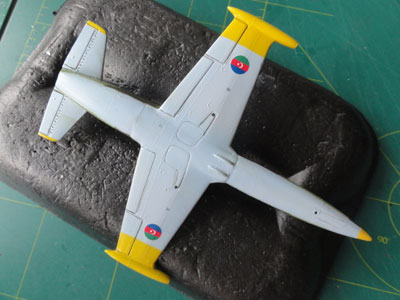
The landing
gear from the kit was installed but the two pitot tubes on wing leading
edges replaced and made from metal needles. Static dishargers were also
added made from flexible fishing wire at the horizontal stabilizer tips
and rudder. Fishing wire is a bit more flexible so is less vulnerable.
The bits of wire were fixed with super glue and painted black. Anti-collision
lights (red and dark blue) were painted on the wing tip tanks and got a
drop of Micro Kristal Kleer to suggest a light. A light grey anti-glare
panel was added on the wing tip tank inside faces.
Made from thin plastic card, some smaller antennas on the spine and lower aft fuselage were set in place. On each canopy a fixed handle is seen so 2 in total on the port left sides, these were made from thin sprue.
Finally the model got a semi-matt varnish clear coat using a mix of Tamiya Flat Base and Future with the usual technique. That completed the model.
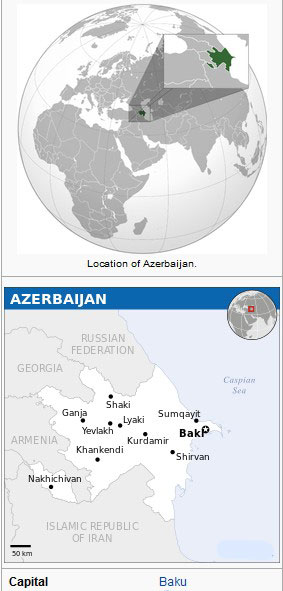 ...
...  ..
.. 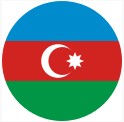
The Azerbaijani
air force (AzAf) was re-established after the country became independent
in 1991. Before that, during the Nagorno-Karabakh War in the 1980s and
early 1990s some L-39 aircraft were used for ground attack. Nowadays the
country has a couple of dozen L-39 aircraft which are used as trainer.
Russian aircraft types like the Su-25 and MiG-29 are in the air force as
well.
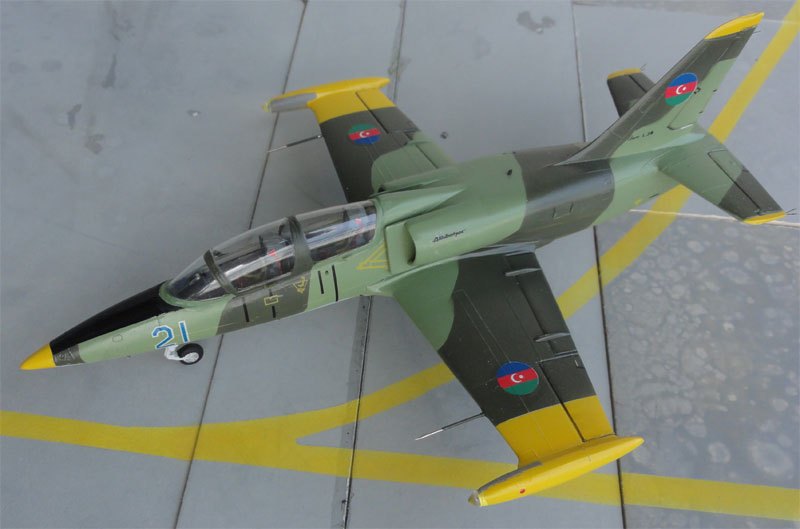
Using another KP kit, this model was to be finished as a L-39 of the Ghana Air Force in Western Africa. The model was made rather straight forward as described on page 1....
The canopy was set closed. For the colour scheme: first the red panels were airbrushed on a white undercoat after masking using Revell Aqua 330 "feuerrot" acrylic.
Next, the colours used for the camouflage
were:
Sand: Revell Aqua 88;
Green: Revell Aqua 65;
Lower surfaces: Gunze Sangyo 308
(about FS 36375 light grey);
There also black anti-glare inboard panels on the inner wing tip fuel tanks were added, painting those by hand with a brush. I could not clearly see if an anti-glare panel was on the nose so did not apply this one. A GSh-23L 23 millimeter twin barreled cannon was added using resin of set 72-002 from MIKU (but also the Eduard L-39 kit has it).
Markings came through decals from
various sources: the yellow intake warning triangles came from Aztec set
72049; the roundels were made by combining Spanish roundels with green
dots punched from decal with a Waldron Punch and Die set.
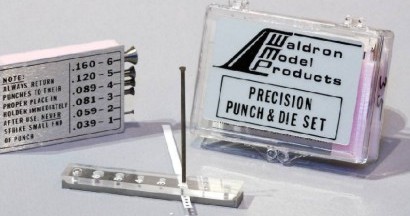
The tail flag was made from strips
of coloured decals. The registration G901 came from the spares box.
Other kit finishing was similar as
described above. Final installment was the undercarriage
as well as some smaller antennas. That completed the model.

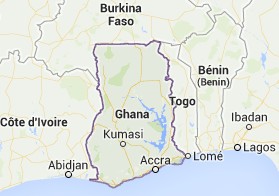 .
.
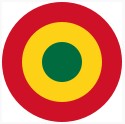
The Ghana
Air Force (GHF) was established mid 1959 with instructors form Israel
and it appears that even Hanna Reitsch (Hitler's personal pilot) started
the gliding school in 1962 in Ghana. In the beginning, mainly British aircraft
were used like Chipmunks, Beavers and Otters as well as some transports
like Skyvans, Caribou and Hawker Siddeley 125. Probably from 1989 Aero L-29 Delfins were delivered. Later from probably 2000 two L-39ZO aircraft were
purchased and used by no.4 squadron but these are now retired, the K-8
being used.
Currently the air force has no real fighter nor attack aircraft but it had Aermacchi MB339 aircraft until 2014. Some Mil helicopters, K-8 trainers and a Fokker F27 as well as some other utility aircraft are now in the inventory. The main GHF base is at Accra, close to Kotoka international airport and other bases are at Takoradi and Tamala.
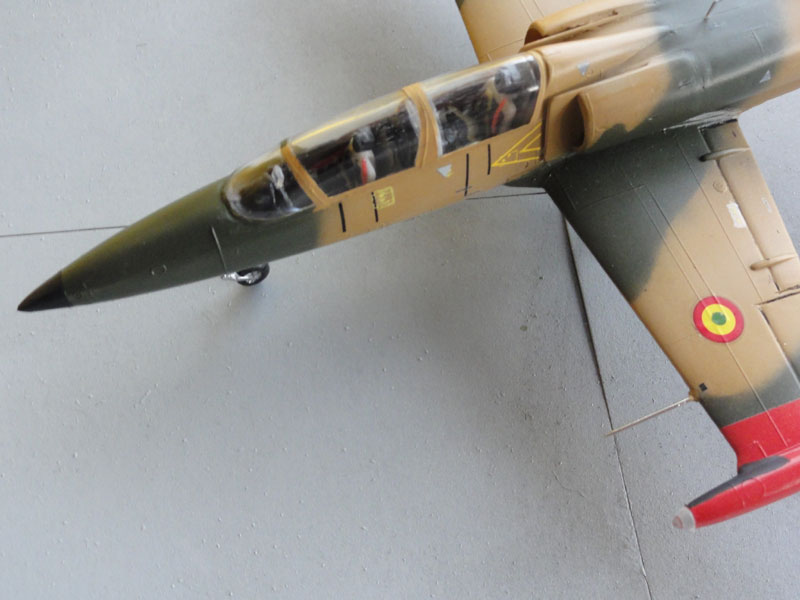
Aero L-39ZO
Ghana "G901" (now retired)
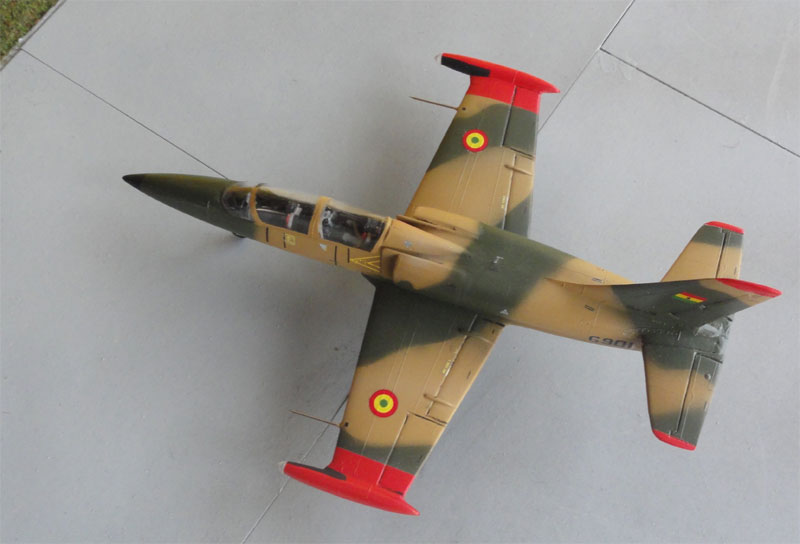 .....
.....

..
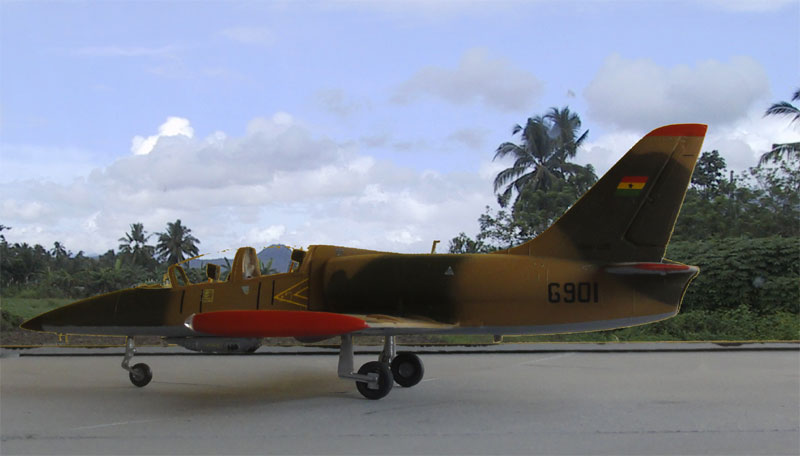
On the tarmac with the tropical trees
in the background
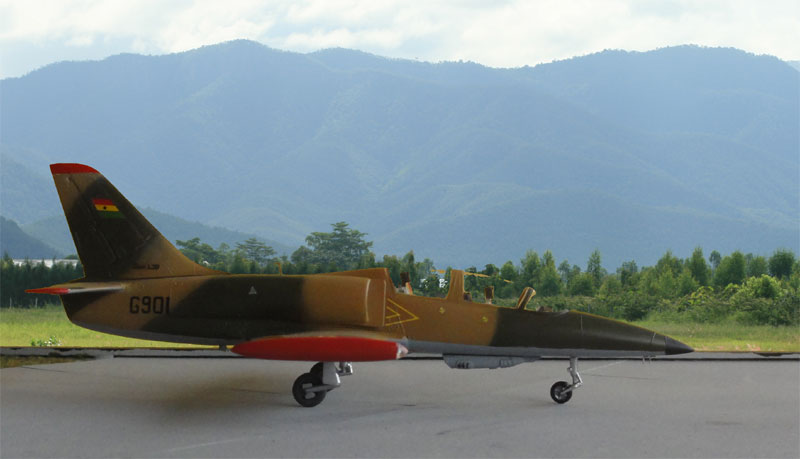
L-39ZO
Ghana Air Force
The KP model not was not that bad at all but sanding and putty was needed. I think I had an early pressed kit with still "fresh moulds".
The base colour is white with red (for which Revell Aqua 330 feuerrot was used) and a green through a mix of 90% Revell Aqua 61 smaragdgrun + 10% Revell 360 farngrun. Applying the complex colour scheme is a lot of work with patterns of a "Storch". The idea came from a BS Modelle 1/48 set. I used drawings to make a 1/72 decal design that was printed by a third party.
I made a photo copy of the decal design and used the print as a guide for masking. The lower surfaces are not indicated in the instructions, I used photos and the decals as guide.
An extra decal piece was airbrushed, handy to make repairs if needed.
Note the white area where the lower "storch" bird decals will come.
Each printed decal pattern needed to be cut out from the single film sheet.
I used a few red stars from the spares box as well.
The landing gear was used as per kit but got some hydraulics from thin wire. Some bits were set in the cockpit like seat harnesses and the student blind flying screen.
I also used some decals for the instrument panels and side consoles.
The new Pavla canopy was set but there are very tiny gaps, these were closed with white glue and painted when dried. The pitot tubes on the wing leading edges were replaced with metal needles. The final add ons were the static dischargers made from thin fishing line that also have a red paint.
A final gloss varnish coat completed this nice looking L-39.
BELARUS
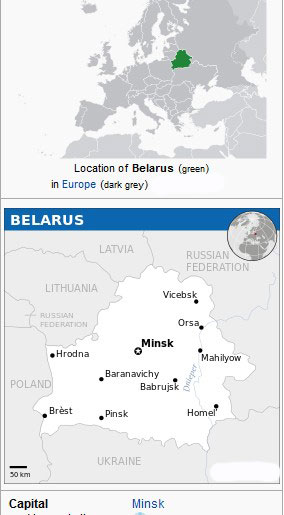

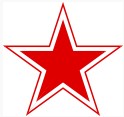
[ area: 207,595 sq.km | population: 9,2 million | capital: Minsk | GDP 4,000 euro per capita nominal ]
Belarus was part of the Soviet Union until its collapse made it independent in July 1990. The country is ruled by the dictator Lukashenko with Putin's consent.
After independence several aircraft were taken over from the Russians but the next decades the fleet became quite small. Some Su-24, Su-27, MiG-29 and SU-25 aircraft were eventually the main combat aircraft along with L-39 trainers. Most were put out of service. Several helicopters used are Mi-24 and Mi-17. The most recent advanced trainer is the Yak-130 arriving in 2016 and a number of SU-30 strike aircraft are in service.
The main bases are Baranovichi, Lida and at Minsk.
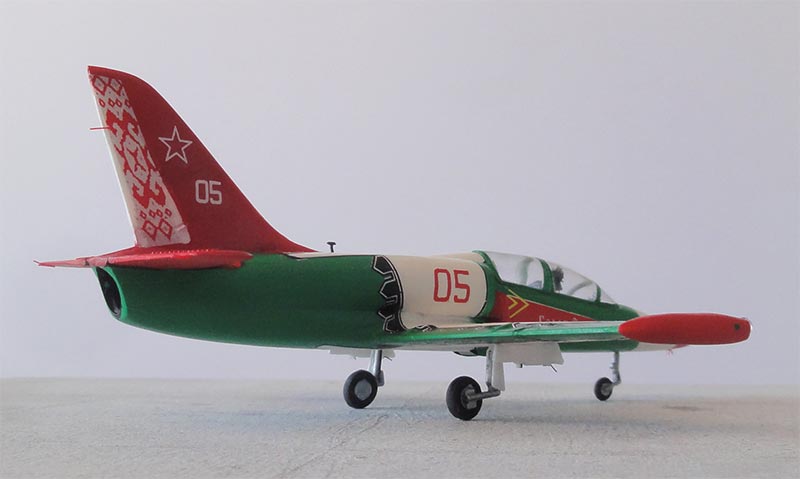
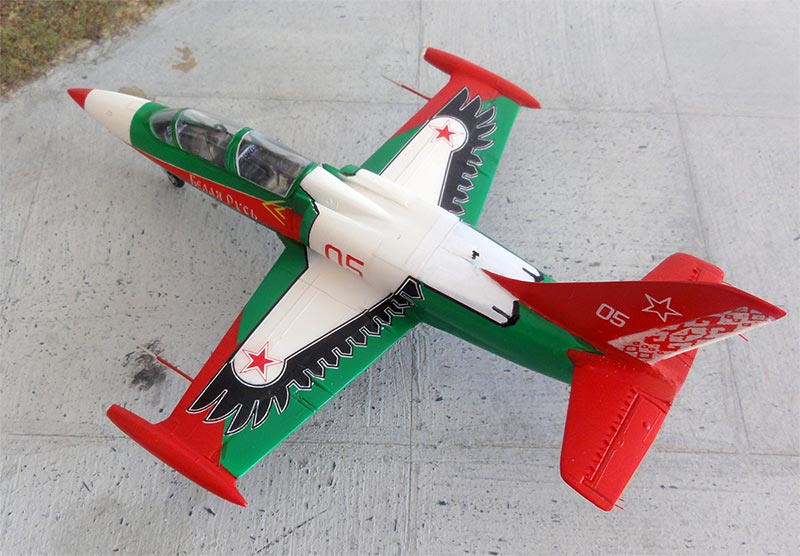
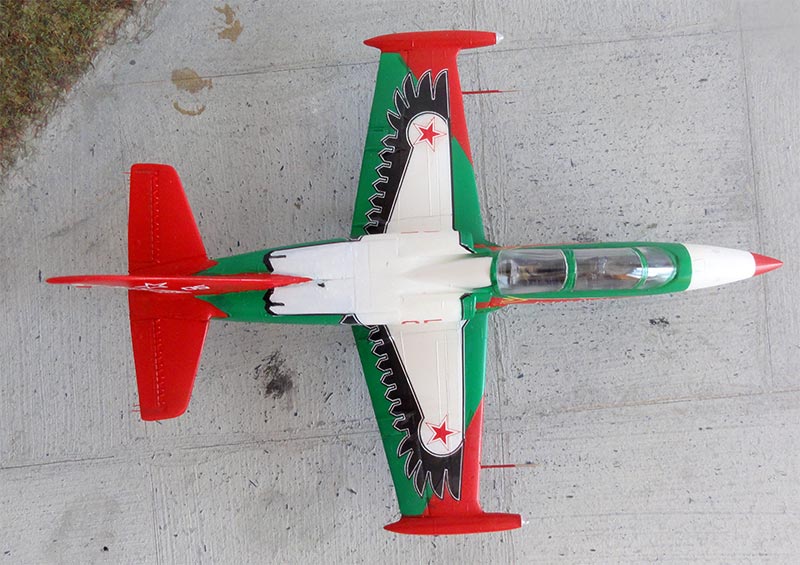
L-39 BELAYA RUS aerobatic team
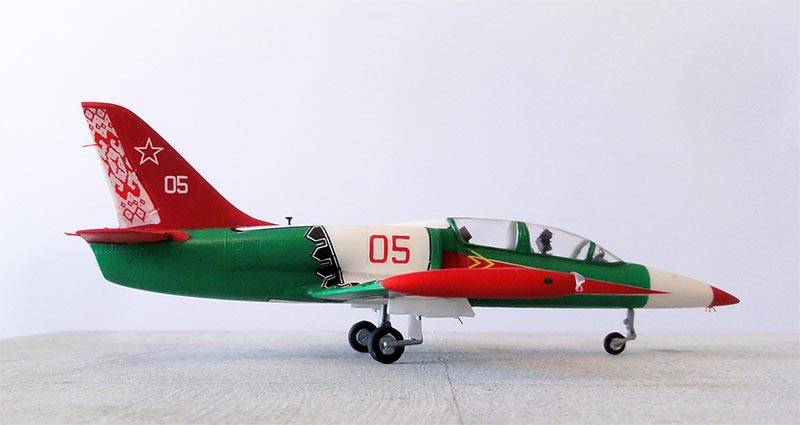
.
(c) Copyright Meindert "designer"/ All rights reserved. Your comments are welcomed by webmaster
Created this page
May 19, 2016
